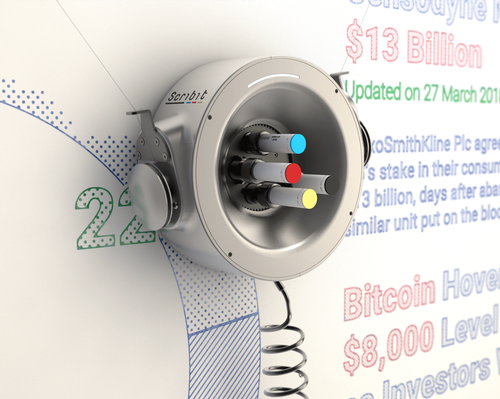10 Jan 2019
Sketching for health: the possible wellness benefits of Carlo Ratti's Scribit
BY Andrew Manns

Carlo Ratti's recently debuted Scribit invites users to create robot-assisted artworks on the walls of their homes, but the device might also help to foster mental wellbeing.
Billed as the "world’s first write-and-erase robot" the futuristic gadget works by transforming physical spaces into editable analog screens which can facilitate spatial wellness.
"The Scribit and the user," Ratti said in a statement, "can seamlessly work together, both of them using markers, to complete an analog piece of creativity that improves the space where we live and work."
So far Scribit has primarily been hailed as a technological achievement, but recent studies suggest that it could also hold some benefits for stress management.
For example, in 2016 a research paper published in The Journal of the Art Therapy Association found that individuals who participated in 45-minute "art-making" sessions saw a significant reduction in their body cortisol – the so-called "stress hormone".
Relatedly, a 2017 report from the Mayo Clinic Study of Aging indicated that people over 70 who engaged in hands-on creative endeavours had a lower risk of developing cognitive impairment than did those who read books.
Given these findings – and the fact that Ratti has explicitly said Scribit was crafted to serve as an alternative to the "pixel monoculture" of smartphones and laptops – it's possible that the invention could have some therapeutic applications.
The device, which is now available for pre-order, was unveiled a few days into the new year at the Consumer Electronic Show (CES) in Las Vegas, following a Kickstarter successful fundraising campaign.
Close Window